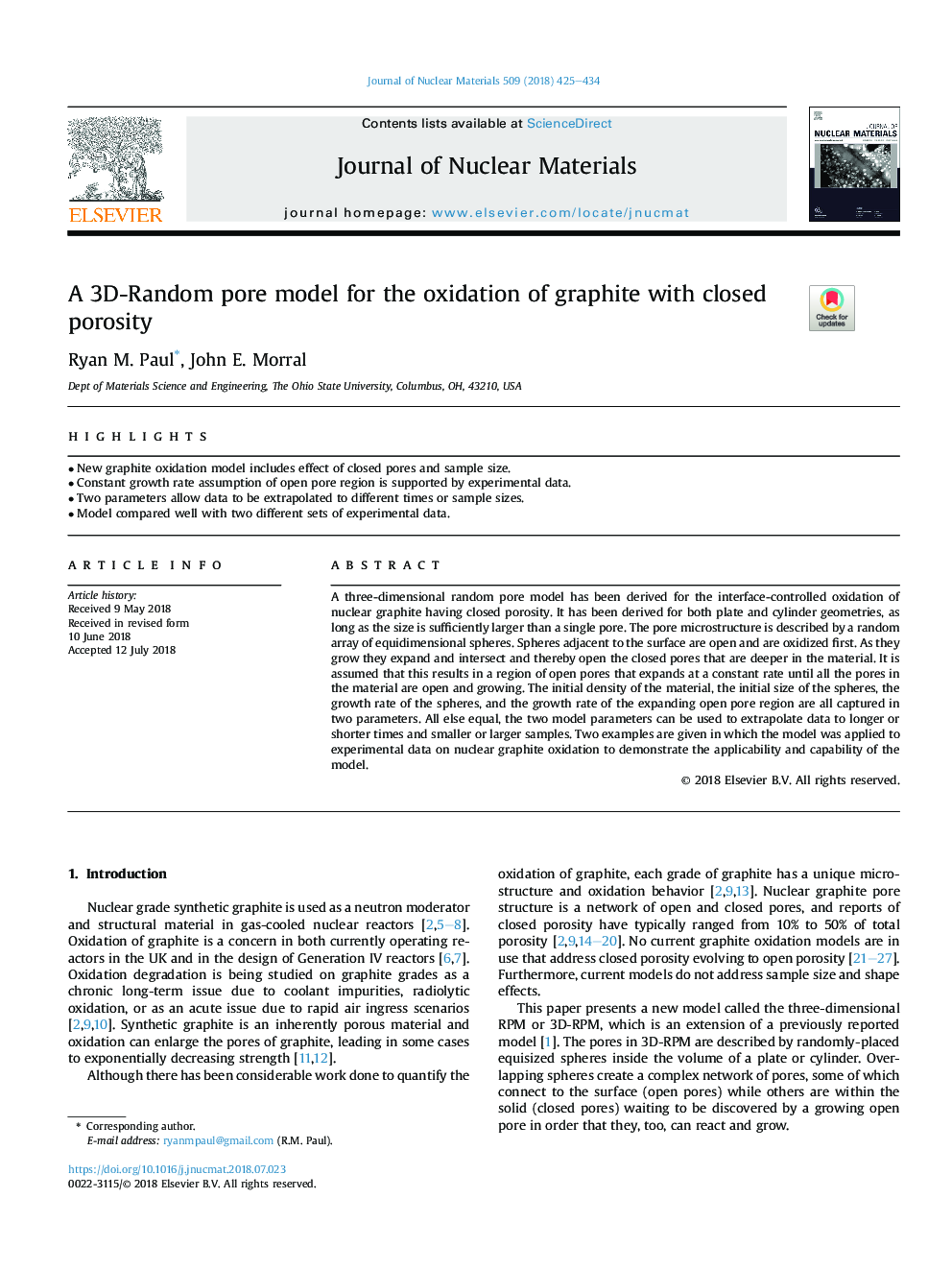| Article ID | Journal | Published Year | Pages | File Type |
|---|---|---|---|---|
| 7963006 | Journal of Nuclear Materials | 2018 | 10 Pages |
Abstract
A three-dimensional random pore model has been derived for the interface-controlled oxidation of nuclear graphite having closed porosity. It has been derived for both plate and cylinder geometries, as long as the size is sufficiently larger than a single pore. The pore microstructure is described by a random array of equidimensional spheres. Spheres adjacent to the surface are open and are oxidized first. As they grow they expand and intersect and thereby open the closed pores that are deeper in the material. It is assumed that this results in a region of open pores that expands at a constant rate until all the pores in the material are open and growing. The initial density of the material, the initial size of the spheres, the growth rate of the spheres, and the growth rate of the expanding open pore region are all captured in two parameters. All else equal, the two model parameters can be used to extrapolate data to longer or shorter times and smaller or larger samples. Two examples are given in which the model was applied to experimental data on nuclear graphite oxidation to demonstrate the applicability and capability of the model.
Related Topics
Physical Sciences and Engineering
Energy
Nuclear Energy and Engineering
Authors
Ryan M. Paul, John E. Morral,
